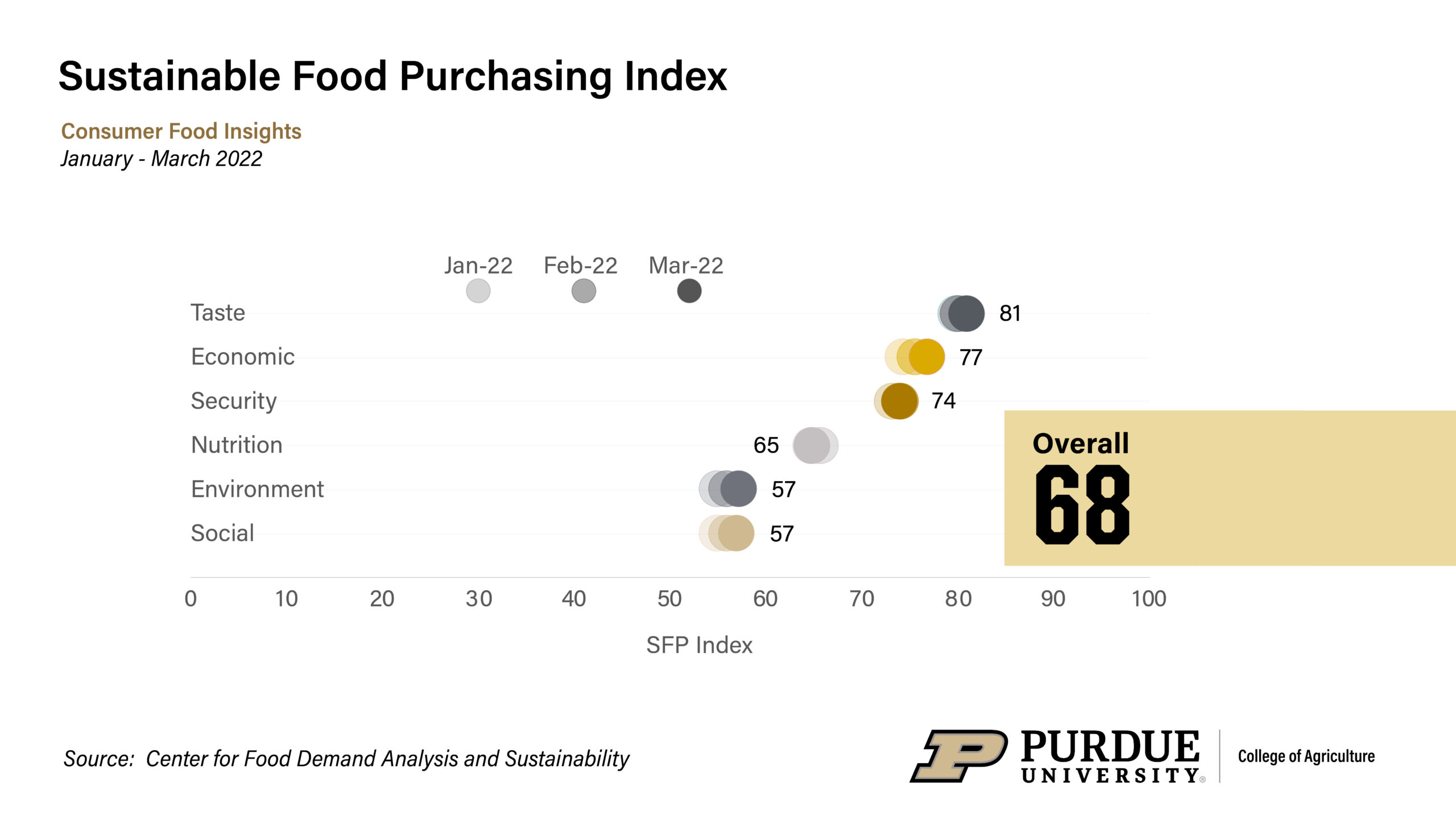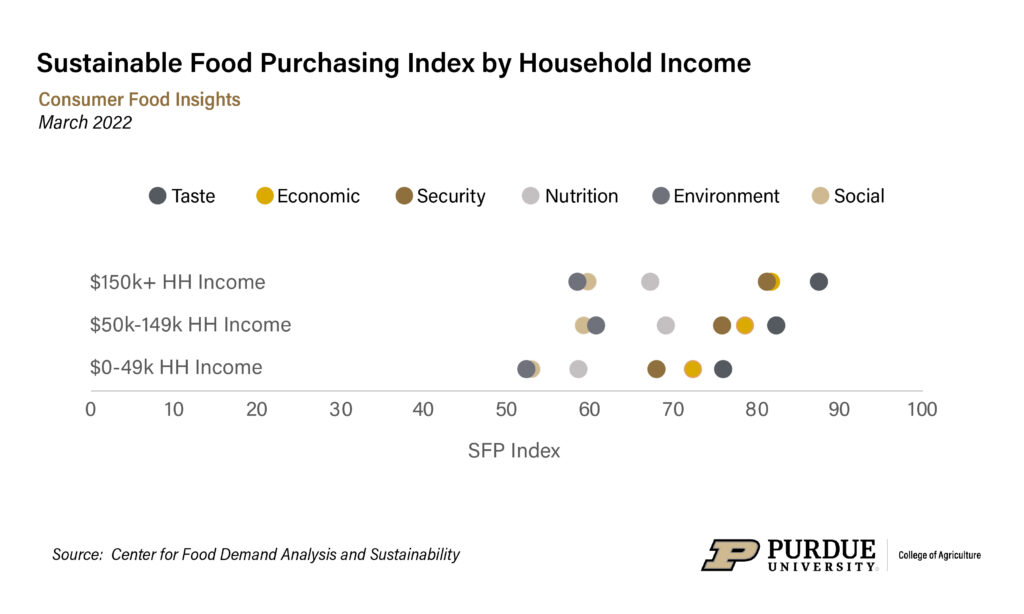Key results include:
- The Sustainable Food Purchasing (SFP) Index remained at 68/100
- Share of households experiencing very low food security rose to 9.7%
- Inability to find specific foods at the store decreased to 21%
- Total food spending increased by 8%
- 16% of spending on food away from home went to delivery
- At present, consumer food demand is price insensitive
ARE AMERICANS PURCHASING SUSTAINABLE FOOD?

The Sustainable Food Purchasing Index (SFP). The score reflects consumer food purchasing that aligns with a set of key recommendations for healthy diets from sustainable food systems. (Purdue University image/Courtesy of the Center for Food Demand Analysis and Sustainability)
The Sustainable Food Purchasing (SFP) Index is a self-reported measure of food purchasing designed to assess how well consumer shopping habits correspond with healthy diets from sustainable food systems, as described by the EAT-Lancet Commission on Food, Planet, Health. SFP scores range from 1 to 100. A score of 100 reflects a set of key recommendations for better nurturing human health and supporting environmental sustainability.

The Consumer Food Insights Report examined differences in responses across low-, middle- and high-income brackets. The results showed differences in support of policies, as well as in self-assessment of sustainable food purchasing. (Purdue University Image/Courtesy of the Center for Food Demand Analysis and Sustainability)
WHAT WOULD YOU LIKE TO KNOW ABOUT CONSUMERS?
If you are interested in additional analysis or adding questions to the survey, consider joining our Consumer Insights consortium. Contact rdevans@purdue.edu to learn more.
Survey Questionnaire: March 2022
Formulas and Calculations
March 13, 2022
